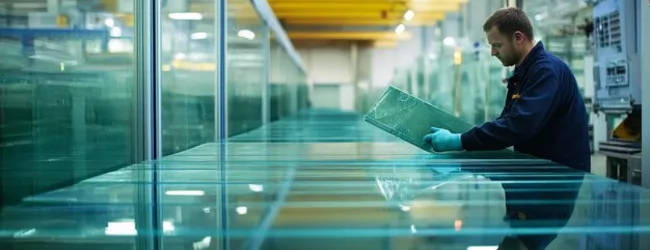Table of contents
The demand for tempered glass is soaring, fueled by the booming construction, automotive, and electronics industries. If you’re looking to capitalize on this growth, starting a tempered glass manufacturing business in 2025 presents a lucrative opportunity. However, success hinges on a robust tempered glass manufacturing business plan. This article will guide you through the essential steps, ensuring you build a sustainable and profitable venture.
Why Tempered Glass Manufacturing is Poised for Growth in 2025
The surge in tempered glass manufacturing is driven by a powerful combination of factors:
- Stringent Safety Regulations: Increasing global and national safety standards, particularly in construction and automotive, mandate the use of tempered glass due to its enhanced safety features.
- Architectural Innovation: Modern architectural designs increasingly incorporate large, complex tempered glass structures for facades and interiors, fueling demand.
- Automotive Industry Expansion: The growing automotive sector, especially in emerging markets, requires significant volumes of tempered glass for vehicle windows and windshields.
- Electronics Consumerism: The continuous demand for smartphones, tablets, and other electronic devices, all requiring screen protection, ensures a steady market for tempered glass.
- Energy Efficiency Demands: The rising focus on sustainable building practices increases the need for energy-efficient tempered glass solutions, like insulated and low-E glass.
- Infrastructure Development: Large-scale infrastructure projects, such as airports and commercial complexes, rely heavily on tempered glass for safety and aesthetic purposes.
- E-commerce and Packaging: The growth of online retail has increased the need for safe and durable packaging, where tempered glass plays a role.
Steps to Start a Tempered Glass Manufacturing Business in 2025
1. Market Research and Feasibility Analysis

- Target Market Segmentation:
- Construction:
- High-rise buildings: Demand for safety glass in facades and windows.
- Residential projects: Increasing use of tempered glass for balconies, partitions, and shower enclosures.
- Commercial spaces: Storefronts, office partitions, and interior design elements.
- Automotive:
- Passenger vehicles: Windshields, side windows, and rear windows.
- Commercial vehicles: Buses, trucks, and specialty vehicles.
- Aftermarket: Replacement glass and customization.
- Electronics:
- Smartphone and tablet screens: High-demand, rapidly evolving market.
- Appliance panels: Ovens, refrigerators, and washing machines.
- Display screens: TVs, monitors, and digital signage.
- Furniture:
- Tabletops: Dining tables, coffee tables, and office desks.
- Shelves and display cases: Retail and residential applications.
- Shower enclosures and partitions.
- Construction:
- Market Trend Analysis:
- Energy Efficiency: Growing demand for insulated tempered glass to reduce energy consumption.
- Safety Standards: Stringent safety regulations driving the adoption of tempered glass.
- Architectural Innovation: Increasing use of tempered glass in modern architectural designs.
- Smart Glass: Emerging technology offering dynamic control of light and heat transmission.
- E-commerce growth: increased demand from online sellers for safe packing materials.
- Competitive Landscape:
- Identify major players, their production capacity, and market share.
- Analyze their pricing strategies, distribution networks, and customer relationships.
- Identify niche markets or underserved regions where you can gain a competitive advantage.
- SWOT analysis: perform a SWOT analysis of your possible business.
- Feasibility Study:
- Demand Forecasting: Estimate future demand based on market trends and growth projections.
- Cost Analysis: Calculate startup costs (land, building, equipment) and operating expenses (raw materials, labor, utilities).
- Revenue Projections: Estimate potential revenue based on pricing, sales volume, and market share.
- Financial Modeling: Develop financial models to assess profitability, return on investment, and payback period.
- Risk Assessment: Identify potential risks (market volatility, competition, regulatory changes) and develop mitigation strategies.
ALSO READ | Start an Online Marketing Home based Business : Step-by-Step Guide for 2025
2. Crafting a Solid Tempered Glass Manufacturing Business Plan
- Executive Summary: A concise overview of your business, highlighting key points.
- Company Description: Your mission, vision, values, and legal structure.
- Market Analysis: Detailed research on your target market, competition, and industry trends.
- Products and Services: Specific types of tempered glass you’ll produce, including customization options.
- Marketing and Sales Strategy:
- Target customer identification and segmentation.
- Branding and positioning.
- Sales channels (direct sales, distributors, online platforms).
- Advertising and promotion strategies.
- Customer relationship management.
- Operations Plan:
- Production process and workflow.
- Equipment and machinery specifications.
- Raw material sourcing and inventory management.
- Quality control procedures and certifications.
- Logistics and distribution.
- Management Team:
- Organizational structure and key personnel.
- Roles and responsibilities.
- Experience and qualifications of the management team.
- Financial Projections:
- Startup costs and funding requirements.
- Projected income statements, balance sheets, and cash flow statements.
- Break-even analysis and profitability ratios.
- Funding strategy and investor information.
3. Setting Up Your Manufacturing Facility

- Location Selection:
- Proximity to raw material suppliers and target markets.
- Availability of skilled labor and infrastructure.
- Zoning regulations and environmental considerations.
- Transportation and logistics access.
- Government incentives and industrial parks.
- Equipment Procurement:
- Glass cutting machines (CNC, manual).
- Edge working machines (grinding, polishing).
- Tempering furnaces (horizontal, vertical).
- Glass washing and drying machines.
- Quality control equipment (thickness gauges, stress meters).
- Automation and robotics integration.
- Raw Material Sourcing:
- Establish relationships with reliable float glass suppliers.
- Negotiate favorable pricing and payment terms.
- Ensure consistent quality and supply chain reliability.
- Consider multiple suppliers to mitigate risk.
- Licenses and Permits:
- Business registration and incorporation.
- Environmental clearances and pollution control permits.
- Building permits and zoning approvals.
- Fire safety and labor licenses.
- BIS certification and safety standards compliance.
💡 Pro Tip: If you want to start a Manufacturing Business but have too many doubts, connect with a Manufacturing Business expert from Boss Wallah for guidance – https://bw1.in/1116
4. Production Process and Quality Control
- Production Process:
- Detailed workflow from raw material input to finished product output.
- Optimization of production efficiency and throughput.
- Implementation of lean manufacturing principles.
- Waste reduction and recycling.
- Quality Control:
- Establish quality standards and procedures.
- Implement in-process quality checks and final product inspections.
- Utilize quality control equipment and testing methods.
- Maintain accurate records and documentation.
- Obtain necessary certifications (ISO, BIS).
- Technology Integration:
- Implement ERP systems for production planning and inventory management.
- Utilize CAD/CAM software for design and manufacturing.
- Explore automation and robotics for increased efficiency.
- Data analytics for process optimization.
5. Marketing and Sales Strategy
- Branding and Positioning:
- Develop a unique brand identity and value proposition.
- Create a professional logo, website, and marketing materials.
- Position your products as high-quality, reliable, and innovative.
- Sales Channels:
- Direct sales to construction companies, automotive manufacturers, and electronics companies.
- Distribution through wholesalers, retailers, and online platforms.
- Participation in trade shows and industry events.
- Building relationships with architects and interior designers.
- Digital Marketing:
- Search engine optimization (SEO) to improve website visibility.
- Social media marketing to engage with potential customers.
- Paid advertising (Google Ads, social media ads).
- Content marketing (blog posts, articles, videos).
- E-commerce platforms.
- Customer Relationship Management (CRM):
- Implement a CRM system to manage customer interactions and track sales leads.
- Provide excellent customer service and after-sales support.
- Build long-term relationships with key customers.
ALSO READ | Start Real Estate Business With Zero Investment in 8 Simple Steps
6. Financial Planning and Funding

- Startup Cost Estimation:
- Detailed breakdown of all startup expenses.
- Contingency planning for unexpected costs.
- Accurate financial forecasting.
- Funding Options:
- Bank loans and lines of credit.
- Government grants and subsidies.
- Venture capital and private equity.
- Angel investors and crowdfunding.
- Personal savings and family loans.
- Financial Projections:
- Projected income statements, balance sheets, and cash flow statements.
- Sensitivity analysis to assess the impact of changes in key variables.
- Financial ratios and key performance indicators (KPIs).
- Return on investment (ROI) and payback period calculations.
- Financial Management:
- Implement accounting and financial reporting systems.
- Develop budgeting and forecasting processes.
- Manage cash flow and working capital.
- Financial risk management.
7. Building a Skilled Team
- Recruitment and Selection:
- Develop detailed job descriptions and specifications.
- Utilize multiple recruitment channels (online job boards, agencies, referrals).
- Conduct thorough interviews and background checks.
- Assess technical skills and cultural fit.
- Training and Development:
- Provide comprehensive training on equipment operation and safety procedures.
- Offer ongoing training to keep employees updated on industry best practices.
- Invest in employee development and career advancement.
- Team Management:
- Foster a positive and collaborative work environment.
- Establish clear roles and responsibilities.
- Provide regular feedback and performance evaluations.
- Implement employee motivation and recognition programs.
- Promote safety awareness.
Need Expert Guidance?
Starting a business can be challenging, but you don’t have to do it alone! At Boss Wallah, our 2,000+ business experts are ready to provide valuable insights and guidance. Whether you need help with marketing, finance, sourcing, or any other area of any business, our business experts are here to help you succeed- https://bw1.in/1116
Confused about Which Business to Start?
Want to start your own business but unsure which one to choose? Explore Boss Wallah, where you’ll find 500+ courses by successful business owners, featuring practical, step-by-step guides on starting and growing various businesses. Find your perfect business idea today – https://bw1.in/1111
Conclusion
Starting a tempered glass manufacturing business in 2025 requires careful planning and execution. By conducting thorough market research, developing a robust tempered glass manufacturing business plan, and focusing on quality and customer service, you can build a successful and profitable venture. The growing demand for tempered glass across various industries presents a significant opportunity for entrepreneurs. Remember to stay updated with the latest technologies and market trends to remain competitive.
Frequently Asked Questions (FAQs)
1 . What is the initial investment required to start a tempered glass manufacturing business?
- Investment varies based on scale, location, and equipment. It can range from ₹50 lakhs to ₹5 crores or more.
2 . What are the key raw materials required?
- Float glass, chemicals for processing, and packaging materials.
3 . What are the essential machines required?
- Glass cutting machines, tempering furnaces, glass washing machines, and quality testing equipment.
4 . What are the necessary licenses and permits?
- Business registration, pollution control board clearances, and BIS certification.
5 . What is the profit margin in the tempered glass business?
- Profit margins can range from 15% to 30%, depending on efficiency and market conditions.
6 . How can I market my tempered glass products?
- Online marketing, industry events, and building relationships with architects and builders.
7 . What are the safety precautions to be taken in a tempered glass manufacturing unit?
- Workers should wear protective gear, and proper ventilation and fire safety measures must be in place.
8 . What are the best locations in India to establish this business?
- Industrial areas in Gujarat, Maharashtra, and Tamil Nadu are good locations.


